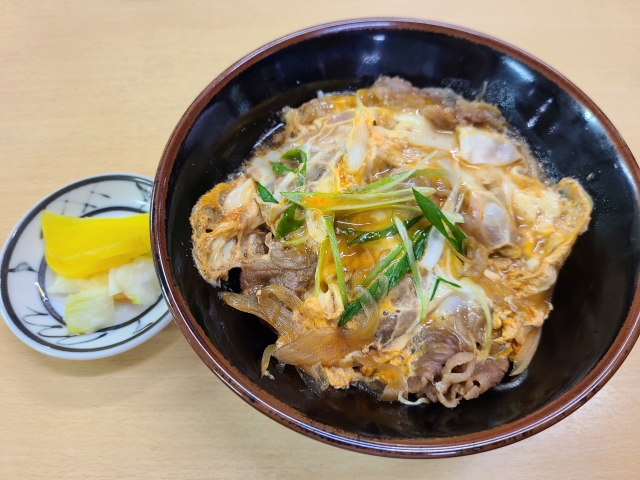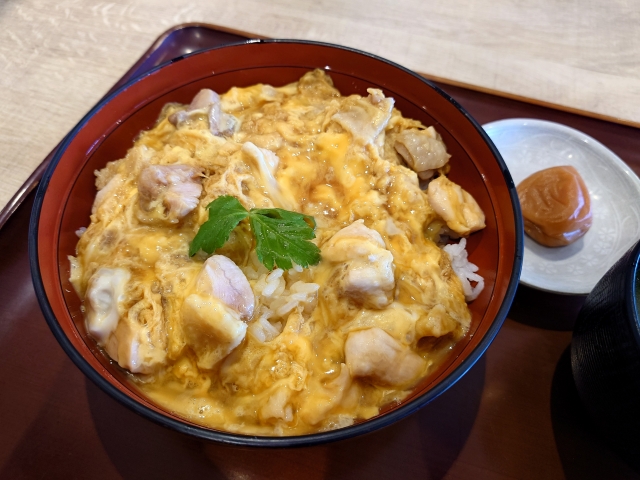For many foreigners in Japan, food is one of the most exciting ways to experience the culture. However, not all dish names are as straightforward as they seem. A popular and beloved Japanese dish known as oyakodon (親子丼) might raise some eyebrows when you learn the meaning behind its name. In this article, we explore the story behind this traditional dish, why it surprises so many, and what makes its cousin, tanindon (他人丼), just as intriguing.
What is Oyakodon?

Oyakodon is a hearty rice bowl topped with chicken and eggs, simmered in a savory sauce of dashi, soy sauce, and mirin, and then poured over hot steamed rice. It’s the kind of comfort food you can find in almost every Japanese home and restaurant. While it’s delicious, the name of this dish often catches foreigners by surprise.
The Meaning Behind Oyakodon
The name “oyakodon” comes from the Japanese words oya (親), meaning “parent,” and ko (子), meaning “child.” In the context of the dish, the “parent” refers to the chicken, and the “child” refers to the egg. Yes, you read that right! The chicken and the egg are literally paired together in one bowl, which many first-time eaters find quite surprising—especially when they realize the symbolic connection between parent and child in their meal.
For some foreigners, the realization that they are eating both generations of an animal in one bite can be a bit shocking, but once they get past that, they often come to appreciate the dish’s simplicity and flavor.
Tanindon: The Stranger in the Bowl

If oyakodon wasn’t enough of a name shocker, meet its relative: tanindon (他人丼). The name tanindon literally means “stranger bowl,” with tanin (他人) meaning “stranger” or “unrelated person.” So, what’s in this bowl? Instead of pairing chicken and egg, tanindon typically consists of beef or pork with egg, thus making the “parent” and “child” unrelated—a stranger’s dish!
It’s a fun and clever play on words that further highlights the creativity found in Japanese cuisine and language. Like oyakodon, tanindon is another delicious option for those looking to explore more of Japan’s rice bowls.
Ingredients and Preparation of Tanindon
Similar to oyakodon, tanindon is made by simmering the meat—usually thinly sliced beef or pork—in a mixture of dashi, soy sauce, mirin, and sugar. Once the meat is cooked, beaten eggs are poured over the simmering broth, and everything is cooked together just until the eggs are soft and slightly runny. This mixture is then ladled over a bed of hot, steamed rice, creating a simple yet flavorful dish that can be found in many Japanese eateries.
Tanindon is often served with pickles, miso soup, or a small salad to round out the meal. While the preparation method is similar to oyakodon, the shift in ingredients gives tanindon a richer and heartier taste, thanks to the beef or pork.
The Playful Naming of Japanese Rice Bowls
The creation of tanindon speaks to the playful and creative nature of Japanese cuisine. The “family” connection in oyakodon contrasts with the “stranger” pairing in tanindon, adding an extra layer of cultural and linguistic meaning to what might otherwise be seen as a simple dish.
In fact, Japanese rice bowls (donburi) often play with themes of relationships. In addition to oyakodon and tanindon, there’s also katsudon (カツ丼), made with a breaded pork cutlet, and gyudon (牛丼), made with simmered beef, which do not have the same relationship-based wordplay but are equally beloved dishes.
Tanindon in Modern Japanese Cuisine
While oyakodon remains more popular, tanindon can still be found in traditional Japanese restaurants and izakayas (Japanese pubs). It is a great option for those who want a savory rice bowl but prefer beef or pork over chicken. Whether you’re a first-time visitor to Japan or a long-term resident, trying tanindon offers a unique taste of how language, humor, and food intersect in Japanese culture.
Conclusion:
Japanese cuisine is full of surprises, and sometimes, it’s not just the flavors that catch you off guard but the meanings behind the names. Oyakodon and tanindon are perfect examples of how language, culture, and food come together in delightful and unexpected ways. So the next time you order a bowl of oyakodon, you’ll know you’re enjoying both parent and child in one savory meal—and perhaps you’ll try tanindon to experience a more “distant” relationship in your dish!







